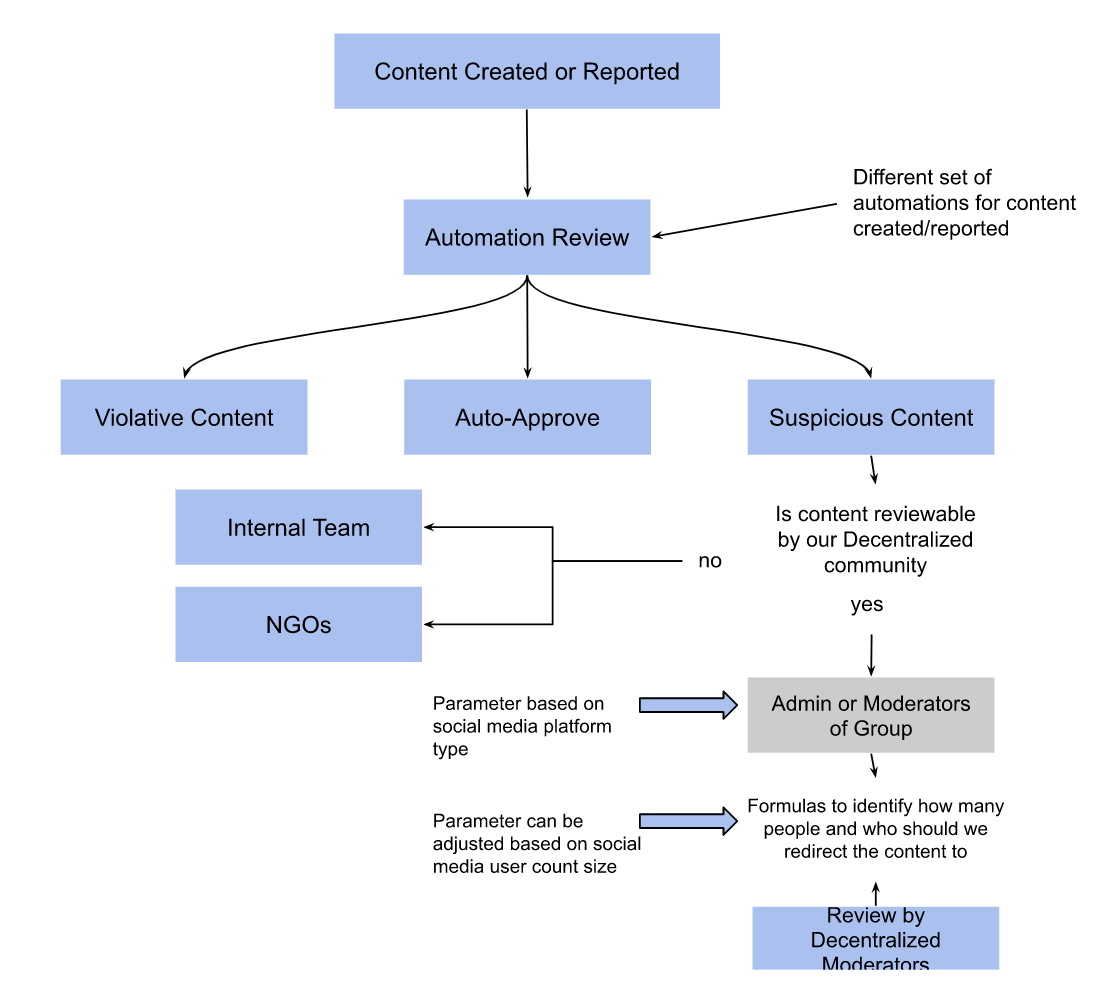T&S Content Moderation
Highlights:
- A scalable, decentralized content moderation system built on the BOS for Web3 platforms with a focus on automation, user experience and adherence to legal requirements.
- It provides users with features that enable them to govern their own online experience.
What it is:
The moderation framework is an open-source, decentralized content moderation system built on the Blockchain Operating System (BOS) and specifically designed for Web3 platforms. It leverages the power of the BOS to tackle the challenges of managing User Generated Content (UGC) through community engagement and automation, providing a scalable, transparent solution to content review that is easy to use and legally compliant.
Why it matters:
The ever-increasing volume of online content and communities necessitates a robust, scalable and transparent moderation system to manage potentially offensive, risky or illegal content. Traditional content moderation processes, which are centralized and often lack transparency, are ill-equipped to meet these demands. With the growing influence of Web3 platforms the need for an innovative solution that addresses these challenges is more critical than ever. Moderation, built on the BOS offers a decentralized approach that empowers users and ensures that content moderation remains scalable and adaptable to the evolving digital landscape.
By leveraging the BOS, the moderation framework not only mitigates the risks of overregulation, consumer backlash and reputational damage but also ensures compliance with regional legal requirements, something that is crucial in a world where content moderation legislation varies significantly across countries and regions. Through the use of AI, the moderation system also addresses the often overlooked mental health concerns of content moderators themselves, creating a more positive, healthier experience.
With its decentralized approach and community-driven governance and moderation, the moderation framework is poised to redefine content moderation for Web3 platforms and contribute significantly to a healthier online environment for all stakeholders.
Who it’s for:
- Developers - Developers can implement the moderation framework into their Web3 projects to manage UGC and create a safe environment allowing them to focus on core features.
- Users - Users interact with the moderation framework through an efficient reporting system, and they also have access to a wide range of tools enabling them to manage their feed content and experience.
- Decentralized moderators - A user-friendly dashboard makes it easy for decentralized moderators to participate in content moderation and receive token rewards, fostering high quality moderation and mental well-being.
- Internal and third party teams - Internal moderator teams or NGO that require a content moderation tool for their needs.
- Social Media or other platforms - By adopting the moderation framework, social media, e-commerce and any other platform with UGC content can gain an open-course decentralized moderation system that promotes scalability, trust, and user satisfaction.
How it works:
- Reporting flow
- Users can report any type of content (e.g. post, comment, Communities, account, etc.).
- The content goes through automations, and different sets of actions are applied (e.g. violative content, auto-approve, suspicious content).
- Suspicious content is assessed by the decentralized community, internal teams, or NGOs depending on the issue type and risk.
- The content is reviewed and the reporter is informed of the decision.
- Detection and automation
- A different set of automations including CV, NLP, and ASR model will run at different times (e.g. content creation, content update, content being queued for review, content being reviewed) when users and moderators are interacting with content.
- Moderator verification
- Any user who would like to sign up to be a community moderator would need to go through a light KYC process and training. They will have access to support to do their job on a regular basis, and will be rewarded through tokens.

What’s coming next:
- Collaboration with legal teams to ensure compliance with regional legal requirements using the BOS and development of policies.
- Ongoing analysis of competitors and alternative solutions to remain ahead of industry developments.
- Improving UI and content reporting flow for users.
- Further development and integration of machine learning technologies for more accurate automations.